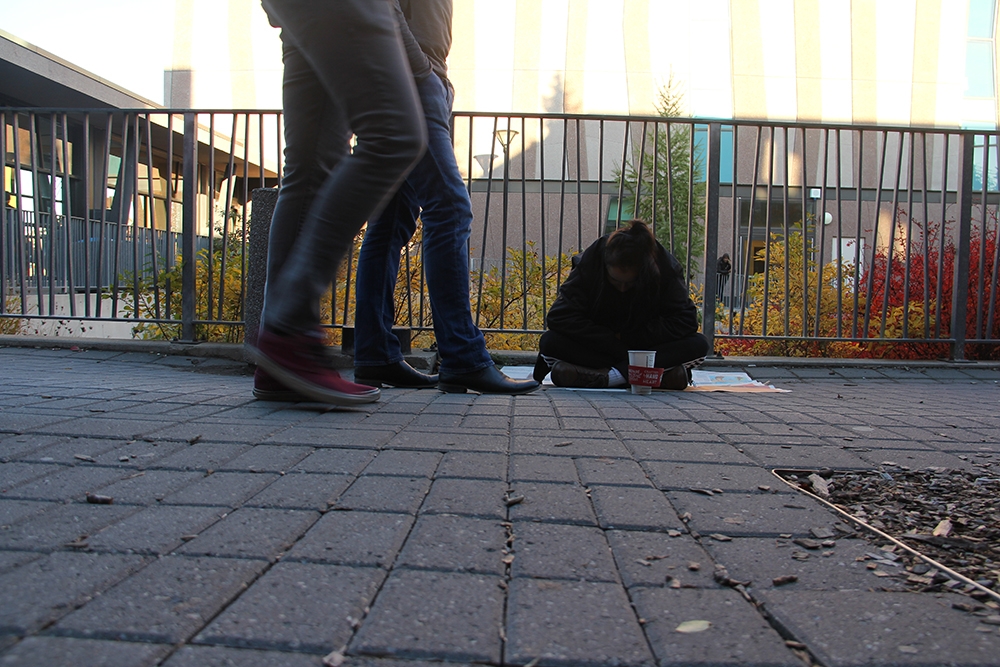Natasha Ali | Contributor
Featured image: The streets are often an escape from verbal and physical abuse for queer youth. | Amir Yazdanparast
A child will inevitably have arguments with their parents. Sometimes, these arguments escalate to yelling and even profanities, but the child can be quite certain that at the end of the day, they will be able to sleep in the comfort of their own bed and in the safety of their own home.
Now try to picture a different scenario, in which you haven’t done anything wrong, but suddenly you are no longer welcome by your own parents and family and you find yourself without shelter. You are rejected for merely being who you are, rather than who you are expected to be. This is a reality for many LGBTQ+ members in Canada and in other countries all over the world.
LGBTQ+ youth homelessness has become a prevalent issue in Canada: LGBTQ+ youth make up as much as 40 per cent of homeless youth living on the streets. These numbers raise particular concerns, as the LGBTQ+ community makes up a minority of Canada’s population.
York alumnus Ilona Alex Abramovich says exposure to street life during the prime years of their lives means that youth are more susceptible to engaging in harmful activities, including substance abuse, prostitution and violence. Studies conducted by The Public Health Agency of Canada indicate that many stimulant drugs, such as cocaine, and antidepressants like heroin and morphine are administered in alarmingly high levels among LGBTQ+ youth living on the streets.
These acts reflect on the physical health, including sexually transmitted infections, and psychological well-being of these youths, especially when experiencing homophobia and social mockery in a setting that was originally meant as an escape from domestic violence.
Perhaps more concerning is that to the general public, homeless LGBTQ+ youth, and homeless people in general, are understood as having individualistic problems rather than systemic issues.
Additionally, there appear to be little to no crisis shelters for LGBTQ+ youth in Canada, as there isn’t enough funding or services capable of tending to their needs.
Abramovich suggests that LGBTQ+ youth are hesitant to seek support services due to the discrimination they are subject to. This makes sense, especially in light of claims that organizations such as the Salvation Army have been accused of being discriminatory in who they choose to hire and serve.
Cities like Toronto and Calgary are currently working on improving the support given to homeless LGBTQ+ youth, such as implementing initiatives to train staff in shelters on how to properly deal with LGBTQ+ individuals seeking help.
One notable program is Aura Host Homes, developed by the Calgary Boys and Girls Club, in order to offer assistance to youth who are LGBTQ+ members living on the streets. The purpose of this program is to match homeless youth with a loving family that is willing to accept them, as well as supplying youth with the necessary resources to help them adjust to independence as adults.
It is crucial to acknowledge that when LGBTQ+ members are overrepresented in homelessness, something must be done to address it. LGBTQ+ youth that are put out of their homes should be met with appropriate and tailored solutions that address the unique mental and physical services this community requires. After all, no person should ever feel that living on the street is their best alternative.


